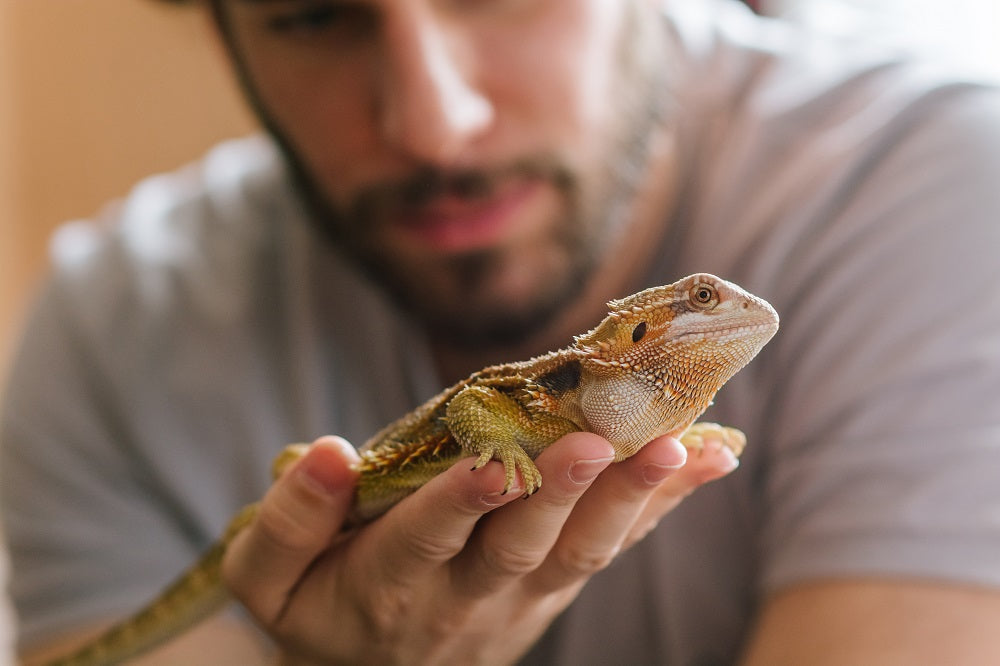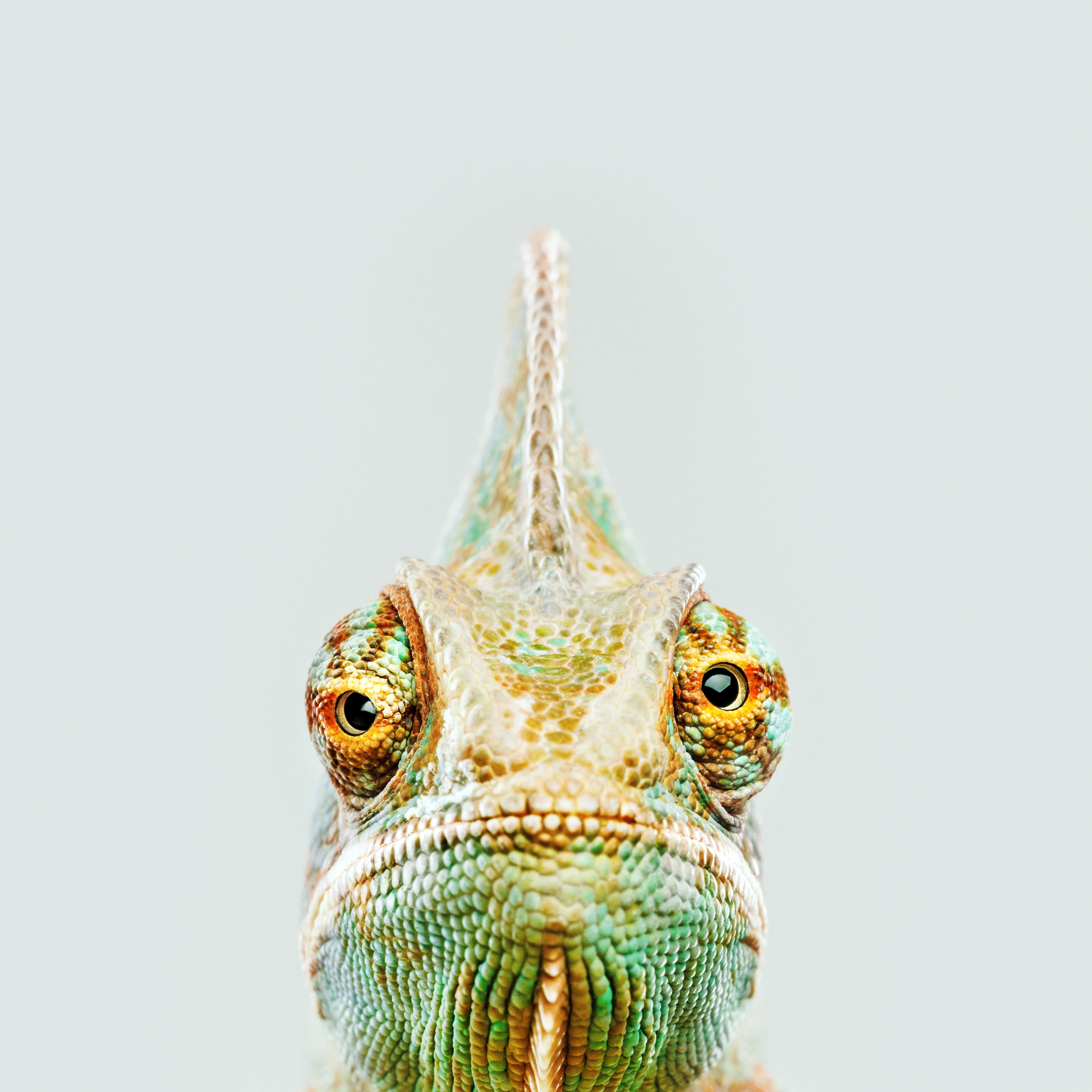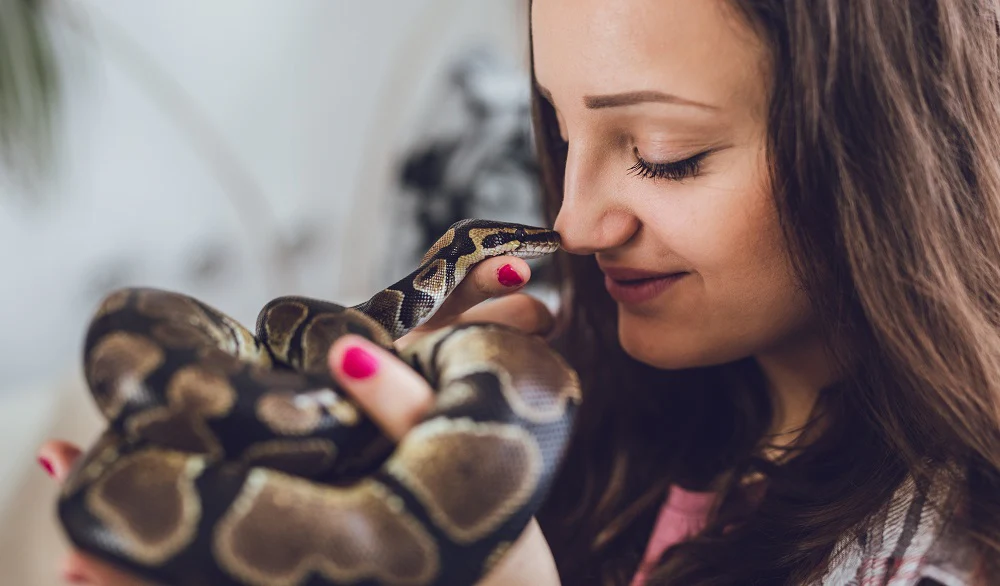Although our hobby is still young, there are still many myths about caring for reptiles. These generally stem from basic misunderstandings and outdated practices from the early days of the hobby, when reptile care was mostly guesswork and resources were extremely limited. Here are 15 of the most pervasive myths in our hobby, and brief explanations about why they’re not accurate.
Choosing an Enclosure
MYTH #1: Pet store reptile enclosures are a good example of how to keep your new pet reptile
Many people treat pet store reptile enclosures like serving suggestions on boxes of food — they see the reptile in the pet store display case, and automatically assume that is the best way to house it. Unfortunately, pet store reptile enclosures are often far from the “best” in any category — they are often too small, too sparsely decorated, and overcrowded, for starters. They are designed to keep the reptiles alive (in some cases it’s just barely), and to display the reptiles as products for sale.
If you are looking for enclosure inspiration, you’re better off joining a *high quality* Facebook community specific to your reptile and scrolling through pictures of example enclosures there for inspiration.
MYTH #2: Reptiles get stressed in large enclosures
Nature does not have walls. If reptiles got inconsolably stressed whenever they found themselves in a large space, then they would all be dead by now. They do, however, tend to get stressed in wide open spaces where there are no places to hide, because that triggers instincts that tell them they are in danger and about to be eaten by a predator. This can be easily remedied by making sure that the enclosure (regardless of size) has plenty of options for the reptile to conceal itself as needed.
While certain species are more tolerant of wide open spaces (ex: bearded dragons) than others (ex: ball pythons), all reptiles benefit from having places to hide in their enclosure. Creating multiple hiding options in a large enclosure enables the reptile to thermoregulate and explore comfortably while knowing that they always have a bolt-hole nearby.
MYTH #3: Multiple reptiles can be kept in the same terrarium to save space
Very few reptiles are truly social. Most are territorial, and prefer to live most of their lives alone, outside of random encounters and breeding season. This means that they don’t get “lonely” and they don’t need “friends” to share their space.
If you want multiple reptiles, you will need to buy them separate enclosures. If you can’t afford to fully outfit multiple enclosures, then you can’t afford multiple reptiles, and attempting to do otherwise is a selfish practice that will ultimately make your pets suffer needlessly.
MYTH #4: Reptile kits are a good way to get everything you need for your new pet reptile
This is one of the most pervasive myths about caring for reptiles, and many new reptile owners get caught in its trap. Reptile kits are a marketing gimmick by reptile product manufacturers designed to sell more product. They are not all-in-one, comprehensive kits for reptile care. Most are generic and not specific to the needs of individual species. They also tend to cut corners and use low-quality supplies to keep the cost of the kit down. In some cases, they are downright terrible and not suitable for use with any reptile.
It’s better to think of starter kits as a headstart rather than a one-and-done solution. They are a quick way to house an impulse buy, but you will likely have to buy more accessories and even upgrade the enclosure itself further down the road.
Lighting
MYTH #5: Reptiles can’t see red light
Reptiles can see red light. Most — if not all — reptiles can actually see more colors than humans can. This is because they are tetrachromats, which means that they have at least four types of cone cells (color receptors) in their eyes. This enables them to see UVA light, which is invisible to humans, alongside the full spectrum of visible light that we know as the rainbow. This includes red light.
Using red (or any other color) bulbs in a reptile’s terrarium will wash their environment in that color and affect their ability to see properly. It may also disturb their sleep patterns, which can in turn negatively affect health and appetite.
MYTH #6: Nocturnal reptiles shouldn’t get any kind of light because it hurts their eyes
Nocturnal reptiles are exposed to the same sun as diurnal reptiles, and their eyes are able to adjust to bright conditions. The difference is that they see better at night, possibly better than they do during the day. Daylight does not cause them pain — it just makes them sleepy.
Providing a source of light during the day can help nocturnal reptiles regulate their sleep/wake cycle and associated hormonal rhythms. Both nocturnal and diurnal reptiles should always have access to shady places where they can get relief from light exposure and rest in a secure environment.
MYTH #7: Albino reptiles shouldn’t get any kind of light because they’ll go blind
Albino reptiles do have eyes that are more sensitive to light. They may appreciate dimmer conditions, and UVB lamps need to be weaker for albino reptiles than they would be for their normally-pigmented counterparts.
But most terrarium lighting is nowhere near as bright as actual daylight, so it’s still safe to use. In fact, avoiding the use of halogen heating or UVB lighting for fear of the light causing damage is denying the reptile the benefits of short wavelength infrared and UVB exposure.
MYTH #8: Nocturnal reptiles don’t benefit from UVB
This is one of the most stubborn myths about caring for reptiles. Multiple studies have demonstrated that nocturnal reptiles are able to synthesize vitamin D3 when exposed to UVB light, which means that 1) they do benefit from UVB exposure, and 2) they need it. This is because vitamin D3 synthesis is a self-limiting system that only turns “on” when the body needs more vitamin D. So if the reptiles in the study are making vitamin D3 when exposed to UVB, that means they didn’t have enough vitamin D to begin with.
It’s also well known that terrestrial vertebrates in general are all able to synthesize vitamin D3 from exposure to sunlight, and generally do not receive enough from their diets even when supplemented. So far, there have been no legitimate studies which prove that any particular species of reptile does not benefit from UVB exposure. Until a species is found which proves otherwise, it is safe to assume that all reptiles benefit from UVB provision in captivity.
MYTH #9: If a reptile can stay alive without UVB, it shouldn’t be provided
Denying a reptile access to UVB and relying on diet and supplementation only is an imprecise approach to reptile health. Because science does not yet have a precise method of dosing vitamin D3 by body weight for every species in captivity, we have no way of knowing whether the amount of vitamin D3 we are giving to our reptiles via supplements is enough. This makes the practice of supplementing or relying on whole prey diets to provide all the vitamin D that a reptile needs very imprecise, especially considering that whole prey items themselves may be vitamin D deficient.
When humans do not get enough vitamin D, we get depressed, more likely to get sick (particularly respiratory infections), slower healing, fatigue, and may experience bone and muscle pain. Although humans and reptiles are quite different in many ways, the way we utilize vitamin D on a metabolic level is understood to be fairly similar across all terrestrial vertebrates. So it can be reasonably assumed that vitamin D-deficient reptiles may experience similar symptoms, but are not able to communicate it to their keepers beyond decreased activity and fertility.
MYTH #10: All UVB bulbs are the same
When it comes to UVB bulbs, there is a lot of individual variation between brands and even between different types of bulbs. Brand and bulb type affects a UVB bulb’s strength, longevity, safety, and reliability.
Arcadia and Zoo Med are currently the leading brands of UVB bulbs in the US. Guides such as the UV Tool, Arcadia Lighting Guide, and Zoo Med’s “Choosing the Correct Lamp” guide are helpful for determining how to use your UVB bulb properly. Keep in mind that terrarium mesh typically blocks 30-50% of UVB output and reduces a bulb’s effective distance.
For maximum precision, use your UVB bulb with help from a Solarmeter 6.5
Heating
MYTH #11: Some reptiles need belly heat
There is a common and persistent belief that certain reptiles, particularly nocturnal and crepuscular ones, need heat directly on their belly in order to digest properly. It’s hard to say how this myth started, but what reptiles actually need is for their core body temperature to reach a certain point before they have enough energy for proper digestion. This is not necessarily contingent on whether heat is being provided from above or below. The decision whether to use a heat mat or heat lamp for warming your reptile depends on factors other than the provision of “belly heat”.
MYTH #12: All heat lamps are the same
Unfortunately, choosing a heat lamp is not as easy as running into the pet store and grabbing the first one that has a picture of your reptile on it. There are actually several different types of heat lamps, and they all have different properties:
- Halogen flood. This bulb produces lots of strong Infrared-A (strongest), lower amounts of Infrared B, and a bit of Infrared C (weakest). It also produces warm white visible light, and the most heat per watt. Halogen heat bulbs generally have lots of different wattages to choose from.
- Incandescent. Incandescent heat bulbs produce less heat per watt than halogens, and instead of having a dome shape they are typically shaped like standard light bulbs. These produce warm white visible light, and come in a variety of wattages.
- Colored. Colored heat bulbs are typically incandescent heat bulbs made with blue, red, or “black” colored glass. They are usually advertised as “nighttime” heat bulb and produce a dim, colored light. Colored heat bulbs come in a variety of wattages.
- Ceramic heat emitter. Ceramic heat emitters (CHEs) produce mainly Infrared-C and are most effective for warming the surrounding air rather than the ground. They produce no visible light and are available in a limited variety of wattages.
- Deep heat projector. Deep heat projectors (DHPs) produce some Infrared-A, lots of Infrared-B, and some Infrared-C. They are like ceramic heat emitters in that they do not produce visible light are available in a limited range of wattages, but they are better at heating the ground.
Whichever you choose to use, make sure It is what’s best for meeting your reptile’s needs
MYTH #13: Reptiles need heat at night
In nature, heat is primarily supplied by the sun. The earth is warmed by the sun during the day, and cools after the sun sets at night. Although that warmth can linger after the sun sets in the form of radiant heat from sun-warmed rocks, roads, and similar surfaces, this warmth typically does not last much more than the first two hours.
Providing heat at night beyond the first two hours after “sunset” is therefore unnatural and can throw off a reptile’s day-night rhythm. In fact, it is speculated that this nightly cooldown promotes better health in reptiles.
The exception to this is in the case of certain tropical reptiles which experience warm nighttime temperatures in their natural habitat. These reptiles may need a lightless supplementary heat source all night long to make sure appropriate nighttime temperatures are available.
MYTH #14. Reptiles will die if they don’t have access to heat, even for a few hours
A common concern expressed by hysterical reptile owners in forums and Facebook groups goes something like this: “My bearded dragon’s heat bulb broke and I won’t be able to get to the store until tomorrow. What can I do to keep my baby warm until then??”
Good news: Reptiles go without heat for long periods of time all the time in the wild, and they live through it. There are plenty of occasions when the sun isn’t shining and the weather is cooler than optimal, such as rainstorms, cold fronts, and nighttime. As ectotherms, reptiles simply slow down their metabolisms during these times and sleep until the weather gets warm again. So if your heat bulb goes out or there’s a power outage, just stop feeding your reptile and let them sleep. As long as temperatures don’t get dangerously low, your pet will be fine.
Substrates
MYTH #15: Loose substrate (especially sand) causes impaction
Geophagy is the practice of eating earth, which includes materials such as dirt and sand. This is known to be a fairly common incidence in wild reptiles, whether intentional or accidental. However, studies of wild reptile gut contents show little to no accumulation of these materials in their digestive tracts. This means that despite the fact that wild reptiles are living on and occasionally eating loose substrates like sand and soil, it is not causing any kind of “impaction,” despite what many people insist is the natural and inevitable result of ingesting substrate, particularly sand.
So what gives? For the answer, we have to look at the difference between captive and wild reptiles. Wild reptiles are typically fairly healthy, albeit generally on the skinny side of things. They have access to optimal basking temperatures for their species, they have access to UVB light, they have a healthy diet, parasites are well within control, and they’re generally adequately hydrated. All of these factors affect the motility of the digestive tract, and while wild reptiles are generally getting what they need in these areas, captive reptiles may not be, which makes them vulnerable to impaction and other problems.
In fact, sometimes the ingestion of sand and soil can be beneficial. These materials contain even smaller particles of essential minerals, and when ingested they act as an all-natural dietary “supplement.”
Sometimes it can be hard to tell the difference between factual information about reptile care and information that is based on myth. When this happens, evaluate the quality of the source and information with these questions:
- Am I getting this information from an expert or just some random person on the Internet?
- Is this information scientifically-backed?
- Is this information consistent with the nature of the reptile’s wild habitat and ecological niche?
- Would this action improve or decrease my pet’s quality of life?
Most of the time, the common myths about caring for reptiles do not improve quality of life, and they definitely don’t hold up under the lens of science.




2 comments
Reptile Supply
Hi Terry — We don’t currently stock Solarmeter products, but you can buy directly from the manufacturer at Solarmeter.com or via Amazon.
Terry Young
I need to buy a uv meter can you supply one from what I can find a solar meter 6.5 only measures uva not uvb
Cheers
terry
Leave a comment
All comments are moderated before being published.
This site is protected by hCaptcha and the hCaptcha Privacy Policy and Terms of Service apply.